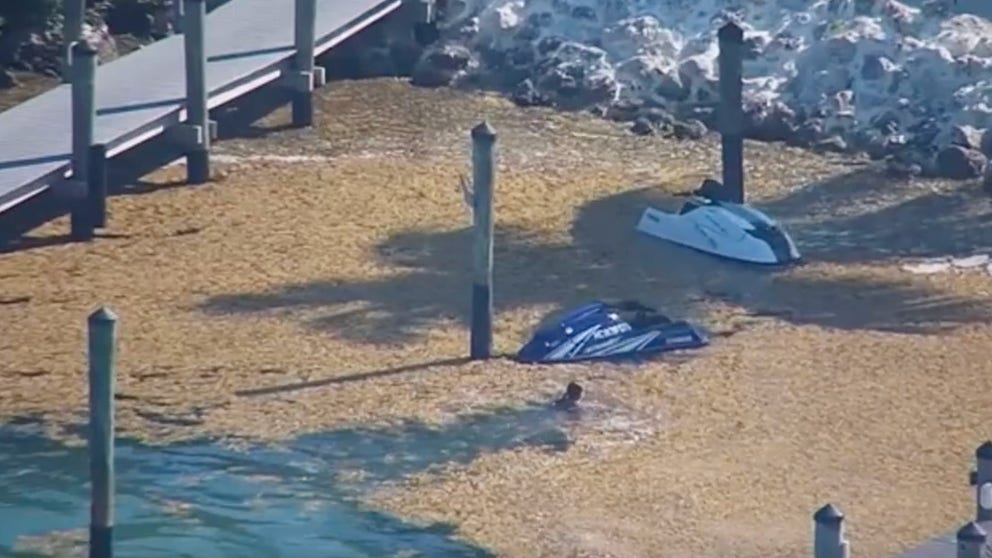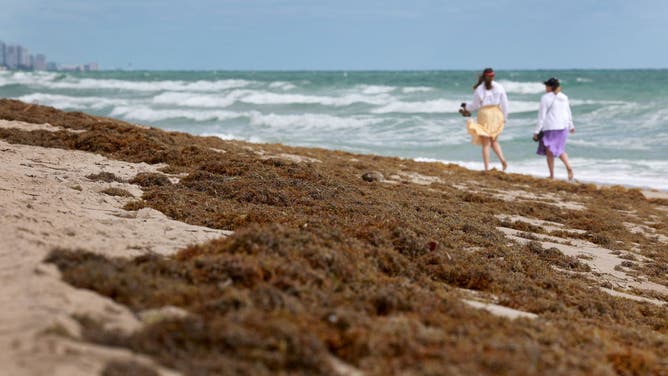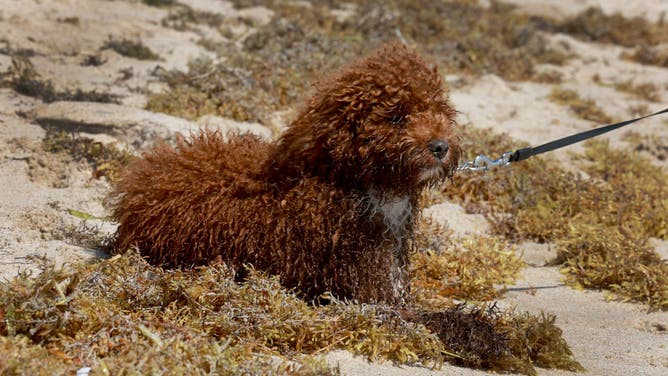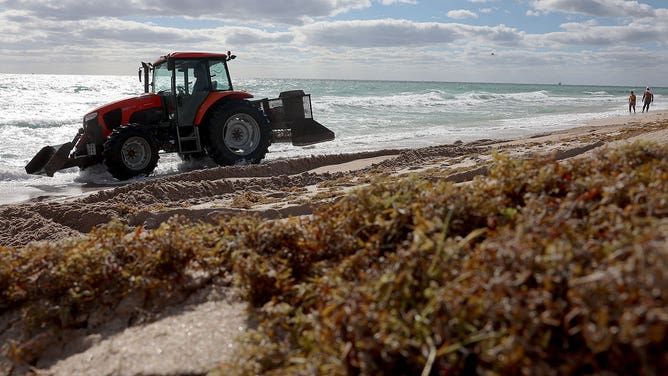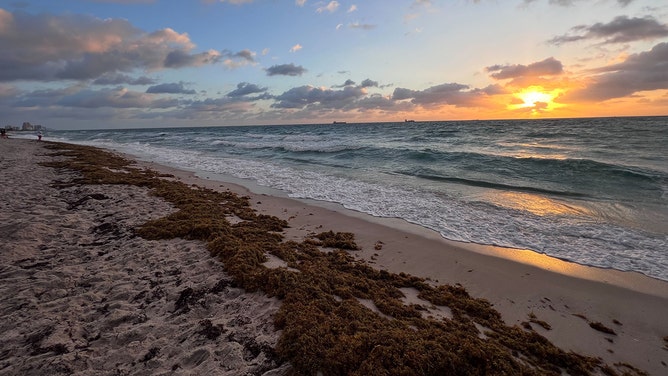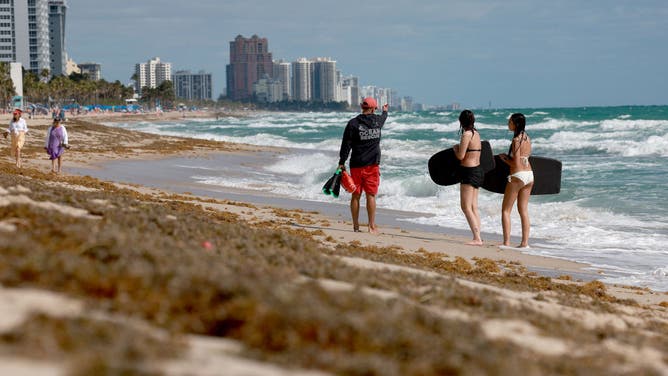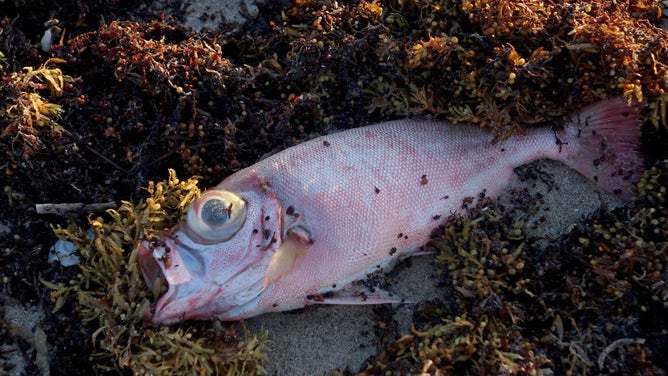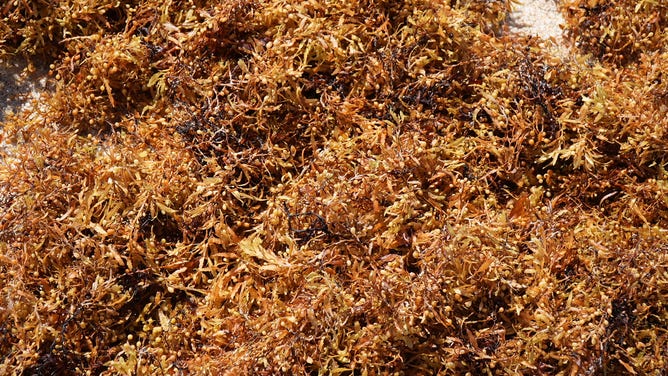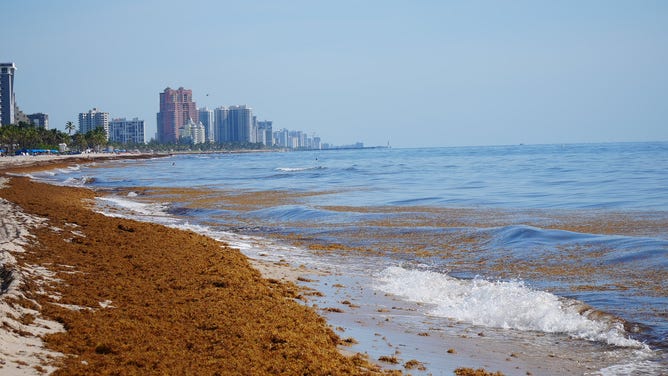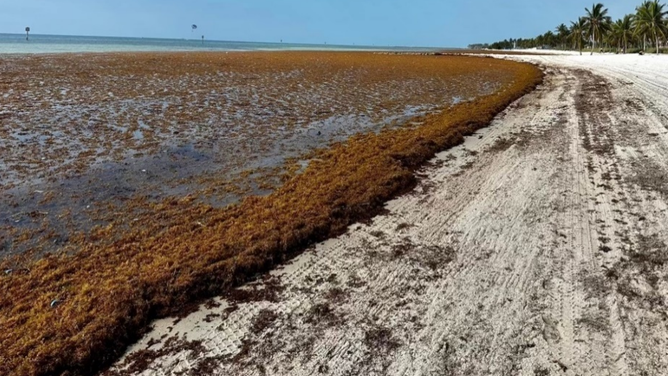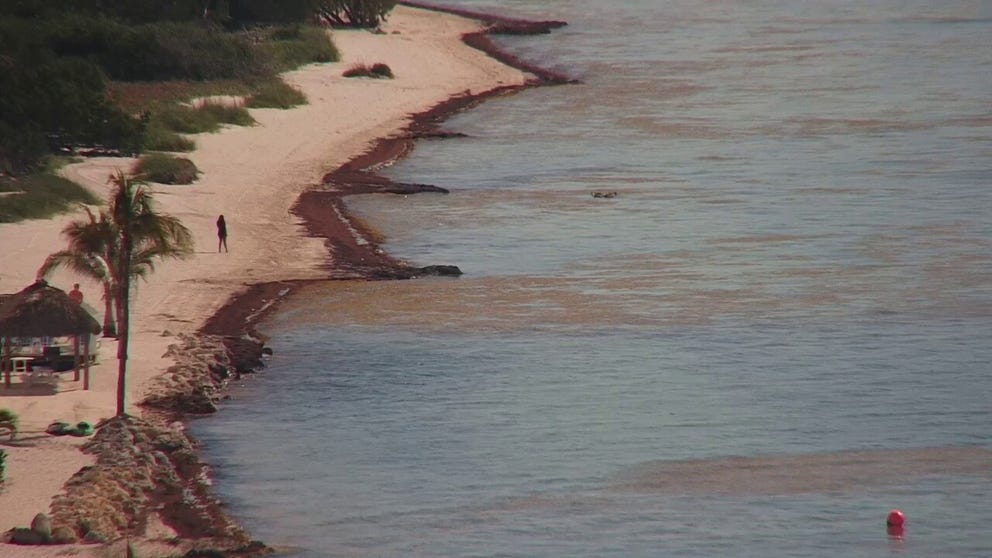Aerial video shows smelly sargassum seaweed invading Florida beach as people try to swim in water
Aerial video shows people in the Florida Keys trying to enjoy the water, but the smelly sargassum seaweed washed onto the shoreline, invading lagoons and piling onto beaches.
Sargassum seaweed invades the Florida Keys over the weekend
In the Florida Keys, a record bloom of sargassum seaweed continues drifting into lagoons and marinas and piling on beaches.
MARATHON, Fla. – Beachgoers had to wade through massive blobs of the smelly sargassum seaweed as it overtook the Florida Keys shoreline over the weekend.
Aerial video shows people trying to enjoy the water, but the seaweed washed onto the shoreline, invading lagoons and piling onto beaches.
Scientists have warned of the possibility of the seaweed stretching thousands of miles and overtaking Florida beaches throughout spring and summer.
WHERE DOES THE SEAWEED BLOB IN FLORIDA COME FROM?
The giant bloom of seaweed continues to grow and has become a problem, especially for those in the Florida Keys.
Last weekend, video captured the scope of the 5,000-mile-wide blob of smelly sargassum seaweed invading the Florida Keys. The aerial video showed thick piles of decomposing seaweed overwhelming the shores of Cocoplum Beach in Marathon.
Watch: Massive blob of sargassum seaweed invading Florida Keys
A 5,000-mile-wide blob of floating sargassum seaweed has reached the Florida Keys, and video from Cocoplum Beach on Easter Sunday in Marathon, Florida, shows it washing on shore and piled up along the beach.
Due to the currents near the Florida Keys, the thick blobs have been getting pushed closer to shore, leading to some unpleasant days for beachgoers.
Officials say the rotting seaweed releases hydrogen sulfide gas, making the beach smell like rotten eggs. The hydrogen sulfide can also irritate the eyes, nose and throat, which can be particularly problematic for people with asthma and other breathing conditions.
The Florida Health Department says that the seaweed can also lead to impacts on creatures living in the sargassum.
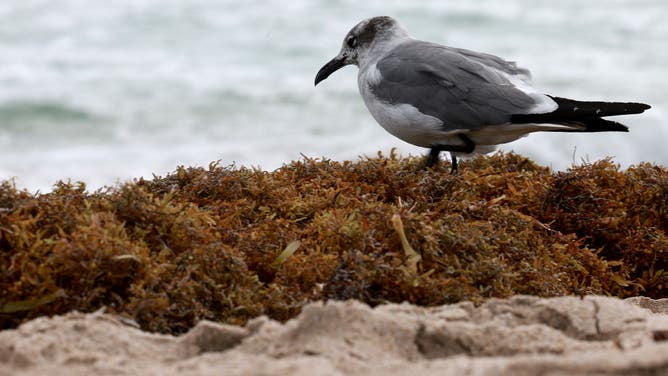
A seagull walks over seaweed that washed ashore on March 16, 2023 in Fort Lauderdale, Florida.
(Joe Raedle / Getty Images)
